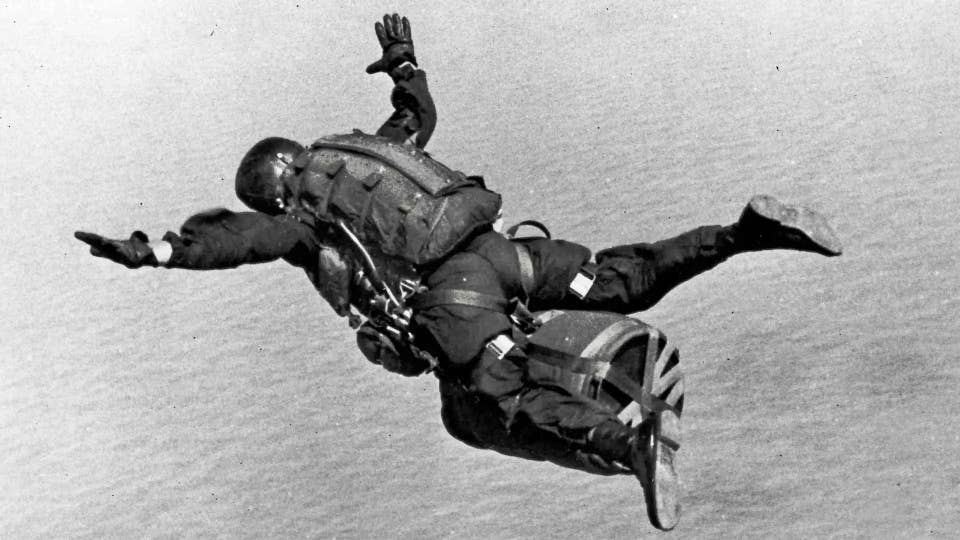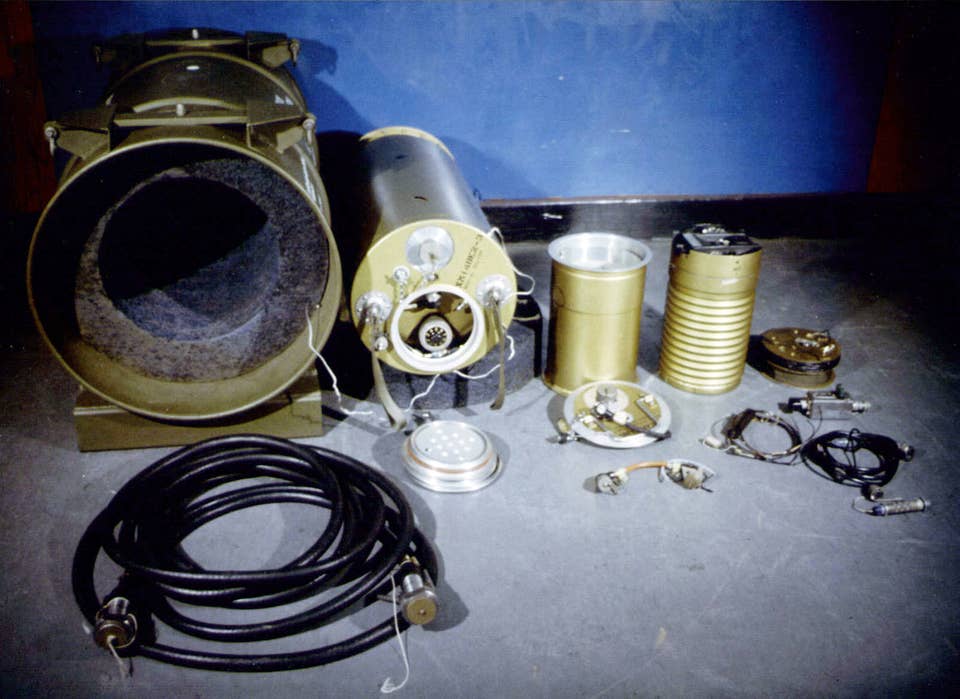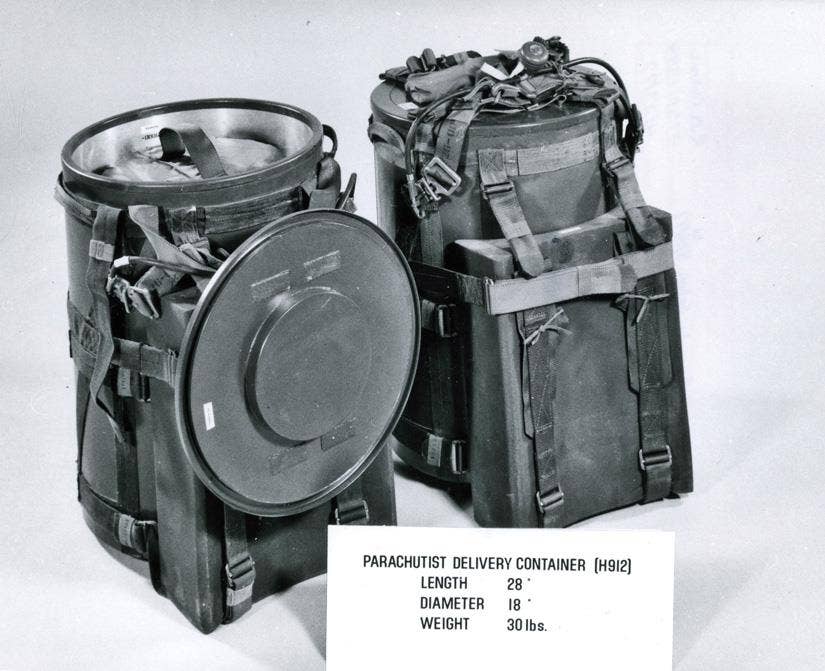
Posted on 06/09/2023 6:18:19 PM PDT by texas booster
For U.S. special operations personnel, conducting high-altitude parachute jumps are pretty much par for the course. Yet doing so with a nuclear bomb strapped between your legs is on an entirely different level.
That’s exactly what can be seen in the top shot above. Here, a U.S. Army Special Forces paratrooper is pictured free-falling during a training exercise with a Special Atomic Demolition Munition, or SADM, harnessed to them. A form of atomic demolition munition (ADM), SADMs were man-portable nuclear weapons, also known as "backpack nukes." These munitions were fitted into specially designed hard/cloth carrying cases for their transportation on the backs (or between the legs) of special operators. SADMs weighed in the region of 150 pounds, with their warheads – the W-54/B-54 – contributing around 50-55 pounds. SADMs were extremely small, just 24 inches long by 16 inches wide.
... Just a few years later, the Soviet Union detonated its first atomic bomb in August 1949, codenamed “Joe-1” by the U.S. While the U.S. military conducted further tests of such weapons into the early part of the Cold War, a broader view emerged that smaller nuclear weapons for limited tactical purposes would likely prove critical for operations on the ground in future conflicts.
...
Furthermore, there was also the fact that Green Light teams would also have had to make their way out of enemy territory once the munition was detonated. According to Bill Flavin, who commanded a Special Forces SADM team during the Cold War, “there were real issues with the operational wisdom of the program, and those who were to conduct the mission were sure that whomever thought this up was using bad hemp.” Indeed, many special operators accordingly described the work of Green Light teams as suicide missions.
(Excerpt) Read more at thedrive.com ...
Parachute missions involving SADMs were performed over the sea, as well as over land during the 1960s and 1970s, in order to train for their potential detonation overseas. In 1972, Green Light units parachuted near the White Mountain National Forest in New Hampshire. As Foreign Policy notes, the nuclear weapon used was a training dummy. Navy SEALs also performed underwater training with the munitions. Moreover, drills with the SADMs also occurred outside the U.S., with Special Forces teams even skiing with them in the Bavarian Alps during, for example.




This is a longer clip from the director's cut.
Say hello to my little friend!
Is that a nuclear bomb between your legs, or are you just glad to see me?
Now we are GloboHomo. Quite a transition.
Slim Pickens?
My father in law worked in the plant for 40 years 7 of those years he was a division manager.
He once told me when he was young, right out of army. (82nd Airborne Intelligence Officer) He once had the job of inventorying the pits, in the middle of winter in the Panhandle. He said it was so cold in the bunkers that he would set on top of the square box that the pits were in.
He never thought about, but after he told me that, I knew why he had no children. (my wife was a step daughter, her mom was married before)
Best regards my FRiend,
Dave K.
He also invented HALO jumps and trained teams in the maneuver.
He was a bad-ass.
In part of the book, he and his team was sent to Alaska for Arctic survival.
Once dropped into their zone, found on the map a bar 20 miles away and they skied the twenty miles and back…two nights in a row.
Their Arctic trainer found out and declared that they did not need survival training.
Same time, an Arctic war game was in play for many military groups. He and his team was assigned to disrupt/create havoc the war game, so they kidnapped the signal corp officer who had the code books for ALL comms… war game ended as it started.
Gives new meaning to “the Big Bang”.
Disclaimer: Opinions posted on Free Republic are those of the individual posters and do not necessarily represent the opinion of Free Republic or its management. All materials posted herein are protected by copyright law and the exemption for fair use of copyrighted works.